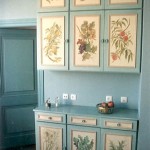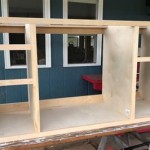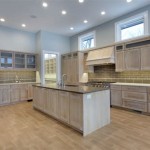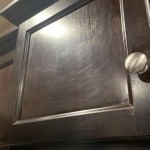White Kitchen Cabinets With Red Oak Floors: A Timeless Combination
The pairing of white kitchen cabinets with red oak floors represents a classically appealing and adaptable design choice for many homes. This combination offers a balance between brightness and warmth, creating a space that feels both modern and inviting. Understanding the nuances of this design choice, including considerations for stain colors, hardware selections, and overall style integration, is crucial for achieving a cohesive and aesthetically pleasing kitchen.
White cabinets provide a clean, versatile backdrop that allows the natural beauty of red oak floors to shine. The inherent reddish-brown tones of red oak add character and depth to the kitchen, preventing it from feeling sterile or overly clinical. This contrast is a fundamental aspect of the design's success, creating visual interest and establishing a comfortable atmosphere.
Understanding the Nuances of Red Oak Flooring
Red oak flooring is a popular choice due to its affordability, durability, and readily available nature. Its prominent grain pattern and warm undertones are features that designers often leverage to add visual texture and character to a space. However, the inherent color and grain can also present challenges when coordinating with other elements in the kitchen, particularly white cabinets.
The natural reddish hue of red oak can vary depending on the grade and cut of the wood. Selecting the appropriate grade ensures a consistent look throughout the floor. Rift and quarter-sawn red oak, for instance, exhibits a straighter grain pattern compared to plain-sawn oak, which displays more prominent cathedral patterns. This variation impacts the overall aesthetic and can influence the choice of stain applied to the floors.
Furthermore, red oak's open grain structure makes it more absorbent than some other wood species. This characteristic affects how stain is absorbed, potentially leading to inconsistencies in color if not properly addressed during the finishing process. Professionals typically recommend applying a sealer or wood conditioner before staining to promote even absorption and achieve a uniform color.
When pairing red oak floors with white cabinets, the stain color becomes a critical decision. Options range from clear sealers that showcase the natural red tones to darker stains that minimize the reddish hue and create a more contrasting look. The choice depends on the desired overall atmosphere and the specific shade of white used for the cabinets.
Selecting the Right Shade of White for Cabinets
The term "white" encompasses a wide spectrum of shades, each possessing unique undertones that interact differently with the surrounding environment. Choosing the right white for kitchen cabinets is crucial to achieving the desired aesthetic harmony with red oak floors. Understanding warm and cool white tones is essential for this decision.
Warm whites, such as those with creamy or yellow undertones, tend to complement the warm hues of red oak. This combination creates a cohesive and inviting space. These whites soften the contrast between the cabinets and the floor, resulting in a more traditional or farmhouse-inspired kitchen. However, using a very warm white with already pronounced red oak can sometimes result in an overly warm or even slightly dated look.
Cool whites, which possess blue or gray undertones, offer a more modern and contrasting aesthetic. These whites can help to temper the warmth of the red oak, creating a more balanced and contemporary feel. However, it's crucial to ensure that the cool white doesn't clash with the red oak; a slight warm undertone in the cool white can help bridge the gap and prevent the space from feeling sterile. The amount of natural light in the kitchen also influences how the white appears. Ample sunlight can warm up a cool white, while a dimly lit space can accentuate its coolness.
Off-whites, such as those with hints of gray or beige, offer a versatile middle ground. These shades provide a softer contrast than stark white while still maintaining a sense of brightness. They can work well with a variety of red oak stain colors, making them a popular choice for homeowners seeking a balanced and timeless look. These off-whites tend to be more forgiving and adaptable to different lighting conditions and design styles.
Consideration should also be given to the sheen of the cabinet paint. A matte finish will absorb light, creating a softer appearance, while a glossy finish will reflect light, making the cabinets appear brighter and more modern. The chosen sheen should complement the overall design aesthetic and the level of natural light in the kitchen.
Hardware and Accessory Considerations
Hardware and accessories play a significant role in tying together the overall look of a kitchen with white cabinets and red oak floors. These seemingly small details can significantly impact the style and atmosphere of the space. The selection of hardware finishes, backsplash materials, countertops, and lighting fixtures should be carefully considered to create a cohesive and harmonious design.
Hardware finishes, such as brushed nickel, stainless steel, or oil-rubbed bronze, can either complement or contrast with the white cabinets and red oak floors. Brushed nickel and stainless steel offer a clean, modern look, while oil-rubbed bronze provides a warmer, more traditional feel. The choice depends on the desired overall aesthetic and the specific shade of white used for the cabinets.
Backsplash materials provide an opportunity to introduce additional texture, color, and pattern into the kitchen. Subway tiles, for instance, are a classic choice that complements both white cabinets and red oak floors. Glass tiles can add a touch of contemporary elegance, while natural stone tiles offer a more rustic and organic feel. The color of the backsplash should be carefully coordinated with the cabinets and floors to create a cohesive look. Light-colored backsplashes generally work well, reflecting light and enhancing the brightness of the space.
Countertops provide a contrasting surface that breaks up the expanse of white cabinets. Granite, quartz, and marble are popular choices, each offering unique aesthetic and functional properties. Dark countertops, such as black granite or gray quartz, create a dramatic contrast with white cabinets and can help to ground the space. Light-colored countertops, such as white marble or cream-colored quartz, offer a more subtle and airy feel. The countertop material should also be durable and easy to maintain to withstand the demands of a busy kitchen.
Lighting fixtures play a crucial role in setting the mood and highlighting the various design elements in the kitchen. Pendant lights over the island or peninsula provide task lighting and add visual interest. Recessed lighting offers ambient illumination, while under-cabinet lighting highlights the countertops and backsplash. The style of the lighting fixtures should complement the overall design aesthetic of the kitchen, whether it be modern, traditional, or transitional.
Beyond these core elements, accessories like rugs, curtains, and decorative items can further enhance the overall aesthetic. A colorful rug can add warmth and personality to the space, while curtains can soften the natural light and provide privacy. Decorative items, such as vases, plants, and artwork, add personal touches and complete the look.

Image Result For Natural Red Oak Floors With White Cabinets Solid Hardwood Wood Floor Installation

Kinger2 Oak Floor Kitchen Tiles Design

Red Oak Floors Transitional Kitchen Kathy Tracey Design

Red Oak Hardwood Floors Kitchens Forum Gardenweb Kitchen

Hardwood Flooring Showdown White Oak Vs Red Gc Pros

Ammarati Kitchen

Oak Floors With White Cabinets This Picture Is Of A New Floor The Home Remo Kitchen And Countertops

2 1 4 American Red Oak Natural Best Choice Floors

3 Kitchen Cabinet Ideas That Go With Oak Flooring In 2024

Going Light On Red Oak Floors The Modern Memaw House Hardwood Co
Related Posts








